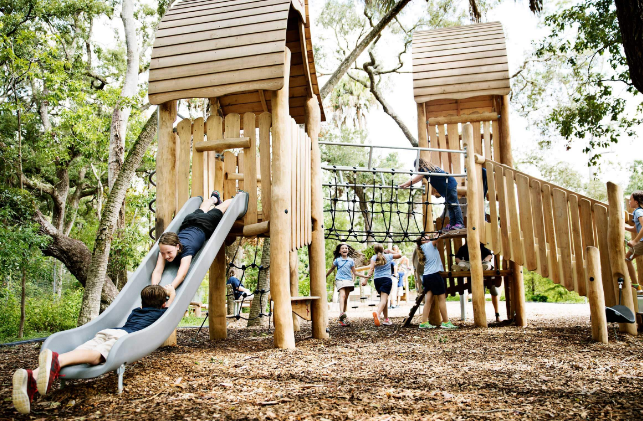Robust Material Selection
The foundation of safe wooden outdoor playground equipment starts with the choice of wood. Hardwoods like cedar and redwood are preferred due to their natural resistance to rot, decay, and insect damage. These woods also possess a higher durability which is critical for withstanding the rigors of outdoor use. Cedar, for instance, has a typical lifespan of 10-20 years in playground settings when properly maintained. Additionally, these types of wood do not splinter easily, which is a crucial safety aspect for children's play areas.
Non-Toxic Treatments and Finishes
Safety extends beyond the structural integrity to the treatments and finishes applied to the wood. It is essential that any wood used for playgrounds is treated with non-toxic, environmentally friendly preservatives. These treatments help extend the life of the playground equipment while ensuring it is safe for direct contact with children. Many manufacturers now use water-based stains and sealants, which provide protection from the elements without the harmful side effects associated with traditional chemical treatments.
Engineered for Stability
Stability is a non-negotiable aspect of playground safety. Wooden playground structures are designed with deep foundations and sturdy construction to prevent tipping or collapsing. Most structures are anchored securely into the ground with concrete or heavy-duty metal bases that are engineered to hold the equipment in place even with vigorous activity. For example, swing sets require deep-set posts that can withstand the dynamic forces exerted during use, typically embedding at least 3 feet into the ground.
Safety-First Design Elements
Design elements play a pivotal role in ensuring the safety of wooden playground equipment. Features such as rounded corners, recessed bolts, and well-spaced bars prevent injuries like scrapes, pinches, or entrapment. Railings and barriers are strategically placed on elevated platforms and along staircases to prevent falls, adhering to specified heights and spacing recommended by safety standards such as the Consumer Product Safety Commission (CPSC).

Regular Maintenance Protocols
Maintenance is key to ensuring long-term safety and durability of wooden playground equipment. A regular maintenance schedule includes inspections for any signs of wear and tear such as cracks, splinters, and loose components. Depending on the inspection results, parts may need to be sanded, sealed, or replaced to maintain the safety and aesthetic appeal of the playground. Regular maintenance also involves checking the integrity of the ground cover, such as mulch or rubber mats, to ensure it continues to provide adequate shock absorption.
Comprehensive Safety Signage
Proper signage adds an additional layer of safety by informing users about the appropriate age groups for the equipment and the rules of use. Signs that are clear and visible help in preventing misuse of the equipment, which can lead to accidents. This educational component is vital, especially in public parks where a variety of age groups access the equipment.
For anyone considering the installation of wooden outdoor playground equipment, understanding and implementing these safety features is crucial. These measures not only protect the children who enjoy these play spaces but also ensure a long-lasting and sustainable investment in community and recreational spaces.